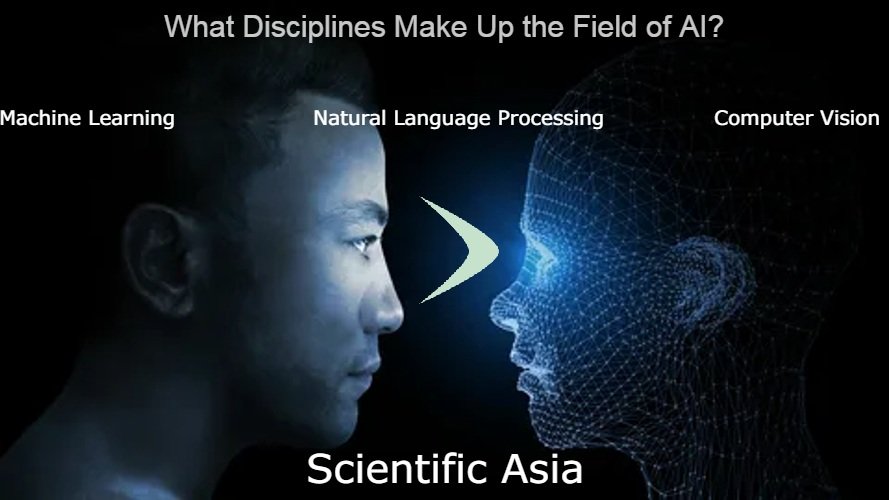Artificial Intelligence
Artificial intelligence, previously belonging to the realm of science fiction, is now a ubiquitous element of our daily life. AI is transforming the way we interact, from personal assistants like Siri to self-driving cars and improved medical diagnostics. This cutting-edge technology is revolutionizing industries and altering the general approaches to problem-solving, decision-making, and innovation.
AI has the potential to solve some of the world’s most severe problems by learning and adapting to new environments. It is paving the path for a more intelligent and efficient future. The global AI market is predicted to see promising growth in the coming years, reaching more than $500 Billion by the end of 2023, which is over half a trillion U.S. dollars!
Whether you expect a world of intelligent robots or are concerned about their ethical implications, AI is one of our day’s most intriguing and fast-expanding topics. Buckle up, as this blog will guide you through the fascinating world of AI. But, let’s discuss the basics before diving deep into the technological innovations of artificial intelligence. Starting from the introduction to AI, moving into the most asked question, i.e., what is the history of AI? and why is artificial intelligence important?
What is Artificial Intelligence?
Now, to describe Artificial Intelligence in simple terms, consider it as a technology that gives machines self-learning and decision-making abilities. With proper AI implementation, computers can replicate human-like intelligence. By this, we mean they can differentiate between things, act or respond to a specific condition, and automatically detect the environment around them.
In simple terms, Artificial intelligence is the technology that enables computers to learn from experience, adapt to new environments, and do tasks much faster and more precisely than humans. AI is becoming an increasingly important technology in disciplines such as healthcare, finance, transportation, manufacturing, and many others.
Many around us consider AI a new concept, as it is a trending topic everywhere, especially after the pandemic, when most businesses switched towards digital solutions. But to burst your bubble, AI has been here since the mid-1950s!
History of Artificial Intelligence
Artificial Intelligence (AI) has a history that dates back to the early 1950s when tech scientists started exploring the power of computers and aiming to create solutions that mimic natural human processes like thinking and learning. John McCarthy, Marvin Minsky, Nathaniel Rochester, and Claude Shannon conducted the early work for the emergence of AI, developing the first artificial intelligence program in 1956 under the project known as the Dartmouth workshop.
Afterward throughout the 1960s and 1970s, research on artificial intelligence aimed at developing intelligent solutions that mimic human specialists in various subjects.
Types of Artificial Intelligence

Artificial intelligence technology in the 21st century has evolved into different types. Here are the three most major types.
Weak AI
This sort of AI is trained to complete a certain task or collection of functions. It is highly outlined and cannot do activities outside of its unique domain. The weak AI stage involves machines that can perform tasks only defined for a narrow set of domains. Voice assistants such as Siri, Alexa, and Google Assistant are examples of Weak AI, also referred to as ANI (Artificial Narrow Intelligence). Another significant example of ANI is image recognition software mostly found in security systems and recommendation algorithms used by e-commerce companies.
Strong AI
The next type of artificial intelligence is strong AI, in which the technology intends to accomplish every cognitive task that a person can complete. Alarming right? Many consider it a threat to human existence. According to Stephen Hawking, an English Scientist, “The development of full artificial intelligence could spell the end of the human race…. It would take off on its own and redesign itself at an ever-increasing rate. Humans, who are limited by slow biological evolution, couldn’t compete and would be superseded.”
But not to worry as there are no existing systems efficient enough to achieve this criterion. Strong AI, also referred to as AGI (Artificial General Intelligence), can adapt to new settings and solve problems across many areas. However, such sophisticated AI is still mostly theoretical, and present AI systems lack the capabilities of reaching these levels of intelligence.
Weak AI vs Strong AI: Weak AI systems are designed and trained for specific tasks, while strong AI systems are capable of performing any intellectual task a human can.
Artificial Super Intelligence
ASI (Artificial Super Intelligence) is what they depict in movies and Sci-fi TV shows. This concept of AI is speculative and reflects a degree of intellect that surpasses human intelligence. ASI can revolutionize society and the world as we know it by recognizing and addressing issues that humans cannot comprehend. Yet, the development of ASI is still a point of contention among specialists, and it is unclear whether or not it will become a reality.
Elon Musk, the owner of Tesla and an AI enthusiast, stated, “The pace of progress in artificial intelligence (I’m not referring to narrow AI) is incredibly fast. Unless you have direct exposure to groups like Deepmind, you have no idea how fast it is growing at a pace close to exponential. The risk of something seriously dangerous happening is in the five-year timeframe. 10 years at most.”
The Need for Artificial Intelligence in the Modern World
The modern world is a complicated and fast-changing environment that is becoming increasingly reliant on technology. Innovation is affecting every area of our lives, from smartphones to self-driving automobiles. Nevertheless, as the amount of data we create grows at an exponential rate, people alone are incapable of processing and making sense of it all.
This is where Artificial Intelligence (AI) enters the picture. AI has the capability of analyzing and extracting insights from massive volumes of data, automating repetitive operations, and even making judgments based on patterns and trends.
In 2023, artificial intelligence carries significant importance across various industries. Many modern-day businesses employ this revolutionary technology to improve their business operations. As AI advances, its uses and advantages are anticipated to expand rapidly, making it a necessary tool for the modern world. Talking with statistics, 9% of the world’s industries use AI to manage their human resource operations, 12% in manufacturing, 20% in sales, and more than 25% in service operations. The High-tech/Telecom industry is the biggest consumer of AI, expected to reach a market size of $38 billion by 2031!
If we see from an assistive perspective, AI can revolutionize almost every industry across the globe with:
- Improving Healthcare
- Making transportation more efficient
- Enhancing Cybersecurity Protocols
- Increasing Manufacturing operations
What Technology Does AI Require?
Artificial intelligence operations require different components to work efficiently. Here are some of the significant ones.
Datasets
Data is the first and foremost requirement of artificial intelligence technology, as a machine crafts new patterns from it. To train as per the requirements, AI algorithms require enormous volumes of data. The quality and variety of the data have a direct association with the accuracy and performance of the final model. An AI model may be unable to generate correct predictions or choices in the absence of appropriate data.
Graphical Processing Units
GPU (Graphical Processing Unit) is part of the computer that is much more efficient in processing graphical data such as images. When compared with the CPU, GPUs overtake it by a mile, generating visuals much faster. Particularly in deep learning, which entails training massive neural networks with millions of parameters.
They are built to perform sophisticated and parallel calculations, which makes them excellent for deep learning tasks. AI models may be trained significantly quicker than standard CPUs by outsourcing calculations to the GPU.
Deep learning models require massive volumes of data, which can be computationally demanding. GPUs can analyze big datasets, allowing AI models to learn and improve.
How does AI Work?
In simple terms, artificial intelligence works by using computer algorithms (a set of procedures) to simulate human intelligence. These algorithms use extensive quantities of data (datasets) to memorize patterns and make predictions or decisions.
Down to Earth Example
A machine learning (sub-part of AI) algorithm may be prepared to recognize images, let us take an example of a program that intends to identify dogs from the fed data. It will take a large set of images as input, some of which contain dogs and some of which do not. The algorithm will learn to recognize patterns in the dog images and use these patterns to make predictions.
As the algorithm continues to discover new inputs, it learns and improves, becoming more accurate in making more sophisticated predictions. Once trained, the AI program starts to identify new images that contain dogs.
This shows us how ANS (Artificial Neural Networks) in artificial intelligence can be used in a wide range of applications, including speech recognition, image and video analysis, natural language processing, and decision-making.
What Disciplines Make Up the Field of AI?

Artificial intelligence is a highly multidisciplinary science that relies on several fields. AI packs computer science at its core, as it depends on algorithms and programming to replicate human intellect. Nonetheless, AI is greatly influenced by mathematics and statistics, which provide the tools for evaluating and processing massive volumes of data.
Moreover, AI is based on a thorough grasp of human cognition, which requires input from psychology and neuroscience. As a result, the subject of artificial intelligence is extremely collaborative, with specialists from different fields collaborating to develop new approaches and applications. Here are some of the subfields in the tech world that make up artificial intelligence.
Machine Learning
As the name suggests, machine learning is the process by which machines are made intelligent. It is the subfield of artificial intelligence that has grown into a giant market itself and is further expected to grow at the rate of 38% CAGR during the period 2023-2029.
Machine Learning is a powerful technology that allows computers to learn and adapt based on the data they receive, whereas AI offers the framework for developing intelligent systems that can utilize this data to make decisions and take action. Data scientists use the Python programming language to craft machine-learning solutions. Another important thing to mention is that machine learning engineers are in high demand in the current tech landscape.
Computer Vision
Computer vision is an important branch of artificial intelligence that involves teaching computers to interpret and comprehend visual information from their surroundings. It is a demanding technique that requires sophisticated algorithms and ML techniques to evaluate and extract information from photos and videos.
Deep learning and neural networks have made computer vision even more powerful and complex as well. Computer vision has become an essential segment of many AI applications, including self-driving cars, face recognition systems, and medical imaging, by teaching machines to detect patterns and identify objects in photos and videos.
Natural Language Processing
Natural Language Processing (NLP) is a rapidly developing branch of artificial intelligence that focuses on teaching computers to read, interpret, and produce human language. With the emergence of voice assistants such as Amazon’s Alexa and Apple’s Siri, as well as chatbots, natural language processing is becoming more significant in our daily lives.
ChatGPT is a trending example of NLP technology that understands human language to produce relevant output. Tech giants have devised NLP tools that not only interpret human commands but also can schedule reminders, make phone calls, and even book appointments. NLP may also be used for sentiment analysis, which can assist businesses in understanding their consumers’ opinions. The Future of AI: Introducing GPT66X, the latest breakthrough in AI technology, with the skill to redefine how we interact with artificial intelligence. With its advanced language capabilities, GPT66X is set to transform industries and enhance human-machine interactions.
What are the Applications of AI

Artificial intelligence has transformed into a complete solution, as many businesses use AI as a service. Here are some real-life applications of artificial intelligence technology.
- Healthcare: Artificial intelligence is being utilized in medical imaging to assist clinicians in detecting and diagnosing illnesses such as cancer, heart disease, and Alzheimer’s. It is also used to track patients’ health and anticipate their outcomes.
- Autonomous vehicles: Artificial intelligence is being utilized in self-driving cars to help them traverse roadways, detect objects and barriers, and make real-time judgments.
- Financial Services: AI is being utilized in financial services for fraud detection and prevention, credit assessment, and investment research.
- Customer service: Chatbots powered by AI are being utilized to provide 24/7 customer care, answer questions, and address concerns.
- Agriculture: Artificial intelligence is being used to monitor and analyze crops, manage irrigation, and anticipate weather patterns in order to increase crop output.
Wrapping it Up
Artificial intelligence has come a long way compared to what it was in its initial days. New programming languages and technologies are paving new avenues for innovation across various industries. To sum it up, artificial intelligence is the technology that will revolutionize the future and still requires a lot of exploration.
However, as we continue to create and incorporate artificial intelligence into our daily lives, we must also consider its ethical implications. With the ethical use of artificial intelligence, we can guarantee that AI technology serves all of humankind. We must approach AI development with transparency and responsibility. Artificial intelligence can create an innovative future.
Read More:
How Blockchain Technology Can Enhance Privacy and Security in the IoT Ecosystem
Web3 Technology The Future of Decentralization
How Robotics Technology is Shaping the Future A Comprehensive Overview
















